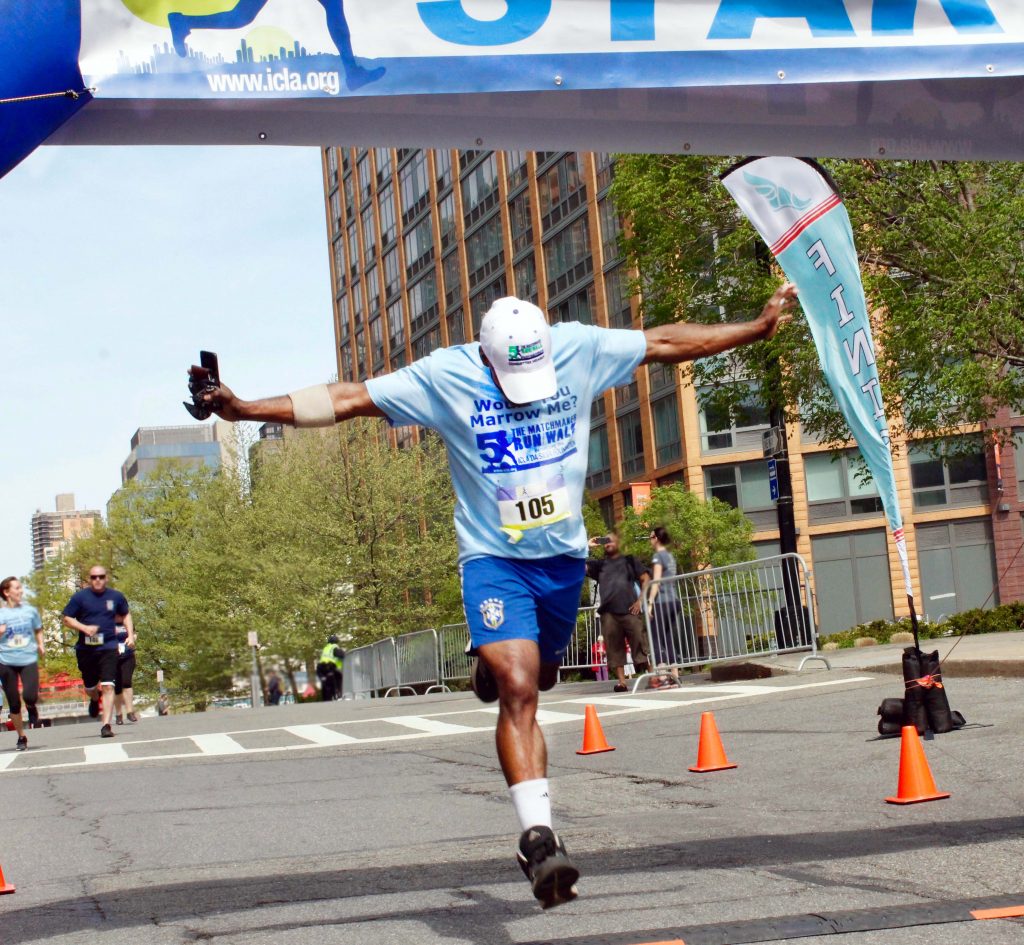After 9 years, Asaya finally received his bone marrow transplant – three days before his 10th birthday!
You may remember Asaya Bullock from earlier stories on our website and social media pages. Asaya suffered from a rare disease called IPEX Syndrome. IPEX is a rare, life-threatening, autoimmune disorder, which caused Asaya to suffer from severe stomach issues, migraines, body aches, rashes, and joint pain for most of his young life.
His only cure was a matching bone marrow donor.
We have been working with Asaya since 2015, recruiting potential marrow donors and providing urgent needs assistance for his family. This video shows 4-year-old Asaya when we first began his search.
There Was No Matching Donor
While thousands of donors were added to the national registry in Asaya’s name, a matching donor was never found.
As Asaya got older, his illness became worse. His health was deteriorating. He was in and out of the hospital multiple times in recent months.
After his original diagnosis, the doctors didn’t believe he would survive past the age of two. He was already living on borrowed time.
Can you imagine the pain and perseverance that his parents have lived with…
“You don’t ever sleep because you know at any point in time your baby could lie down next to you and he doesn’t wake up” – Charlene Bullock
“He doesn’t give up. I don’t give up. We don’t give up” – Vincent Bullock
A Rare Success
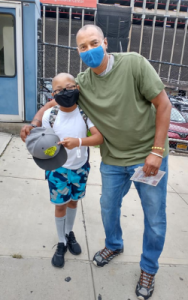 The medical team agreed to the family’s request for a ‘haplo’ transplant. A haploidentical transplant uses healthy, blood-forming cells from a half-matched donor. The donor is usually a parent – since each parent represents about half of your genetic make-up.
The medical team agreed to the family’s request for a ‘haplo’ transplant. A haploidentical transplant uses healthy, blood-forming cells from a half-matched donor. The donor is usually a parent – since each parent represents about half of your genetic make-up.
They are not always successful.
On July 27, 2021, Asaya received a half-matched transplant from his dad.
The transplant was successful.
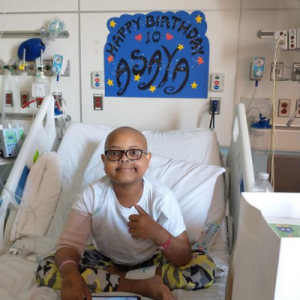
Three days after his transplant, on July 30th, Asaya celebrated his 10th birthday!
Asaya seems to be doing fine. His body successfully accepted 99.4% of the cells. His doctor says this was rare.
So far, there are no complications and he is eating and drinking on his own, which is a terrific sign.
Next Steps
Fortunately, there was room at the Ronald McDonald House in NYC. Asaya will have to stay for 120 days, remaining close to his hospital while they continue to check his progress.
We wish Asaya a long, healthy, pain-free life…with many, many more birthdays to celebrate!
Help us support more patients like Asaya by considering a donation
Written by: Bret Itskowitch
Pennsylvania Teen Raises Awareness in Honor of Her Father’s Fight with Leukemia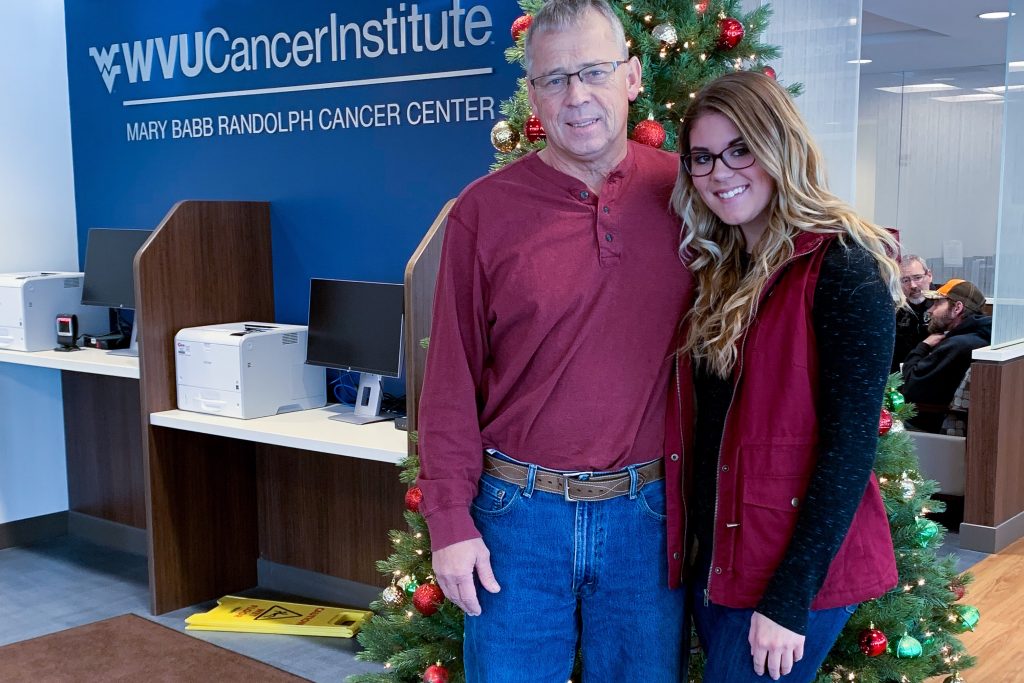
Rick Frazee with his daughter Julee
By Andres David Lopez
Rick Frazee is known for using different vehicles in his trucking company fleet to plow snow for his neighbors in Addison, Pa. This year, his fight with acute myeloid leukemia and two bouts of pneumonia have sidelined him.
“He would be up all day and night plowing,” said Julee, his daughter. “He would plow out the fire department, the little grocery store we have out here, the gas station … that’s been really hard on him right now, not being able to help everybody out.”
While helping to care for her father, Julee, 19, is also advocating for other families fighting blood cancers and blood illnesses. She volunteers as a digital ambassador with Be The Match and the Icla da Silva Foundation, two nonprofit organizations that help facilitate blood stem cell transplants.
A student at West Virginia University studying exercise physiology, Julee has raised awareness of the need for potential blood stem cell donors. So far, she has inspired 35 people to sign up. “Her efforts have made her a top advocate for Be The Match”, said Vanessa Ibarra, a community engagement specialist with the Icla da Silva Foundation.
“Introducing people to the importance of signing up as blood stem cell donors to help patients fighting blood cancers is difficult,” Ibarra said. “But Julee has been successful because she speaks from the heart about her father’s journey with leukemia. She talks about how Be The Match has given her family hope that he will beat it.”
Rick Frazee, 57, spent this summer in the hospital — at one point, he was isolated for 65 days away from his family — while undergoing chemotherapy for leukemia and treatment for pneumonia.
He is back home now. His wife and children help care for him while his doctors plan and prepare him for a lifesaving stem cell transplant.
After testing, doctors found that nobody in his family could serve as his donor. Thankfully, they found three perfect matches for him on the Be The Match Registry.
A blood stem cell transplant is the preferred course of treatment for many patients who are fighting blood cancers. Be The Match has helped facilitate more than 100,000 unrelated donor transplants since 1987. “The Icla da Silva Foundation is the largest recruitment center for Be The Match and specializes in fighting racial disparities in blood stem cell transplants”, says Ibarra.
More than 22 million Americans have registered with Be The Match as potential donors, but a match is not guaranteed for patients. Every year, thousands of patients across the country who need a transplant, lack a matching donor. That’s why constantly signing up new people between 18-40 as potential donors is so important.
Blood cancer patients of Caucasian descent only have a 77% chance of finding a matching donor on the Be The Match Registry. But Rick Frazee’s doctors have three perfect donor matches to choose from for his transplant.
“The doctors said they had never seen this many perfect matches this quickly,” Julee said. “And that was because of the Be The Match Registry.”
“Following in his footsteps”
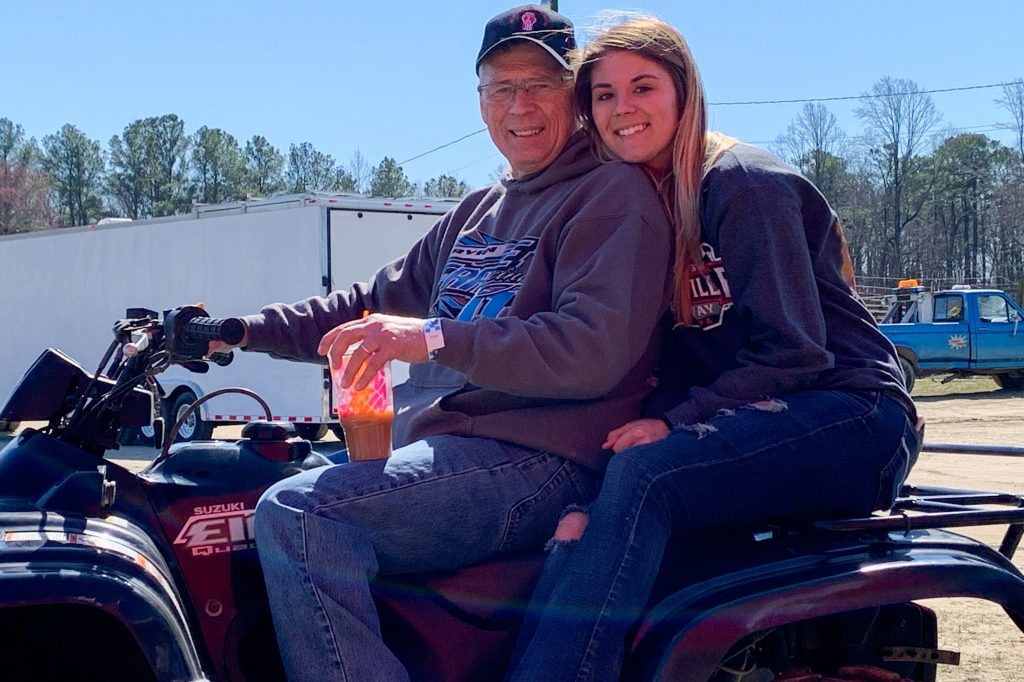
Rick Frazee launched his trucking business in 1997 with one truck. Eventually, R.W. Frazee Trucking and Excavating grew to running 12 trucks as part of its fleet.
“For a small business in a small town that is pretty great,” Julee said. “We had excavating on the side. We had a wood processor. We were selling tons and tons of firewood. So, he’s a very smart businessman. He never went to college. He knew exactly what he wanted to do and he made his dreamwork for his family.”
The company has been downsizing since 2019 when Rick Frazee’s doctors told him he was in danger of developing leukemia.
Julee credits her mother for her strength in holding the family and company together.
“She is the one getting up at 5 a.m. every day, driving to the hospital and then the cancer clinic,” Julee said. “She is also staying up late doing the payroll, and invoices, and doing what she has to for the business…just trying to keep the family together. She is unbreakable.”
While Rick is currently fighting pneumonia, his wife Jamie is also responsible for making sure he receives his antibiotics, a process that can take as long as five hours.
“He has to get bags of saline,” Julee said, “bags of antibiotics, different kinds of flushes. And I’ve learned how to do all that, but my mom is still his main caregiver.”
“Fortunately, the family has felt love and support from their community”, Julee said. At a spaghetti dinner hosted to benefit her father, Julee spoke with many people who had received acts of kindness from him throughout the years. They wanted to know how they could give back.
“Owning a business, we’ve been very blessed over the years and he always wanted to help other people,” Julee said. “A large part of why I’m so passionate about health care and helping people is just from following in his footsteps.”
In May, Julee learned of the need for people to advocate for Be The Match. By sharing her family’s story, she hopes to inspire people to sign up as potential donors. She now has an answer for people who ask how they could help her father.
“You can support my family by signing up for Be The Match,” she says. “It’s free. It takes five minutes. And it’s easy.”
Through social media, Julee has reached thousands of people with her message and she has walked dozens through the process of signing up.
In November, doctors explained to the family that Rick Frazee was no longer responding to chemotherapy. This complicates his receiving the blood stem cell transplant that he needs. He is now receiving antibody therapy to continue fighting his cancer. And because his body is not producing enough blood or platelets, he travels three times a week to Uniontown Hospital for transfusions.
“That’s why he is so tired,” Julee said. “The cancer and the disease is so prominent in his body and his blood.”
Her father is dependent on weekly transfusions. This further underscores the importance for people to donate blood and platelets.
“I just never thought about how crucial it was,” Julee said. “It’s very needed for sure and I know because of COVID the American Red Cross is unable to reach out to people and is hurting for supplies.”
Julee’s goal in advocating for the Be The Match Registry is for at least 50 people to sign up as potential blood stem cell donors in honor of her father’s fight with leukemia.
“It has been over a year fighting this,” she said. “I just knew I wanted to get as many people on the registry as I could.”
To support Rick Frazee and his family in their campaign to add potential lifesaving donors to the Be The Match Registry, visit join.bethematch.org/fightforfrazee or text “FightForFrazee” (all one word) to 61474. Follow the link to register as a potential donor.
After completing a swab kit, you will be added to the Be The Match Registry. Your odds of getting asked to donate blood stem cells are low, which is why Julee is working so hard to keep adding more potential donors to the registry.
Thank You Julee
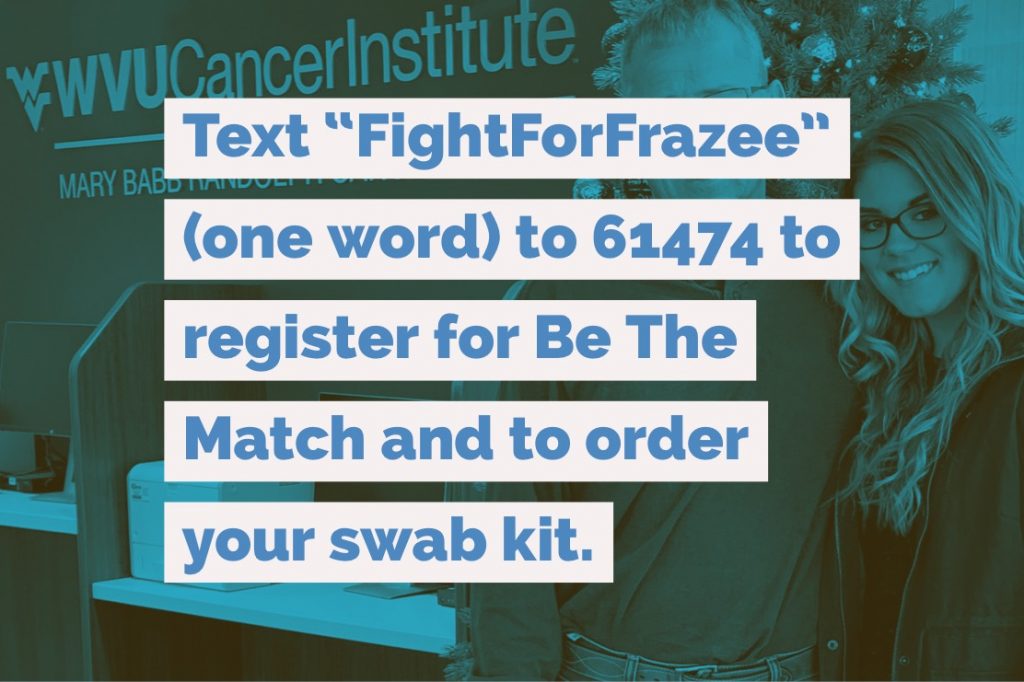
Julian Continues His Journey: The Search for a Life-Saving Donor

Julian Morales is a 9-year-old warrior.
He has suffered from a rare genetic disorder called Dyskeratosis Congenita (DKC) since the age of 3.
His bone marrow doesn’t work properly. Julian’s body doesn’t produce enough stem cells and as a result, his immune system is severely compromised. It also causes painful, sometimes bleeding ulcers in his mouth, which obviously affect his ability to eat…and speak.
Finding a Cure
The only cure to Julian’s life-threatening disease is a blood stem cell transplant.
In order to make that happen, his family needs to find a donor. A healthy, matching donor.
Doctors search the Be the Match registry to find donors. It’s a national registration of volunteers, each of whom has signed up to save a life by donating stem cells if they match a patient in need.
The best chance for a successful transplant is to find a donor who matches the ethnic background of the patient. There are over 20 million potential donors included on the registry.
But there are challenges when searching a donor match for each specific patient, especially if those patients are ethnically diverse.
Challenge #1
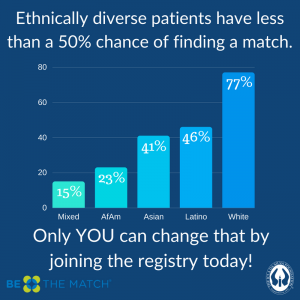 Because Julian is a mix of Mexican and Nicaraguan descent, the chance of finding a matching donor was very limited. Only 7% of potential donors on the registry identify as Hispanic or Latino. There simply aren’t enough people of Hispanic origin included on the registry.
Because Julian is a mix of Mexican and Nicaraguan descent, the chance of finding a matching donor was very limited. Only 7% of potential donors on the registry identify as Hispanic or Latino. There simply aren’t enough people of Hispanic origin included on the registry.
Finding someone who is Mexican and Nicaraguan is even less likely.
His parents became aware of this challenge very quickly.
A Simple Assumption
When you visit the doctor or go to the hospital with a disease, you assume they will be able to help you. There are expectations that a medicine will be prescribed or surgery will be performed in order to make you better. You assume they will be able to cure you.
You never expect that the life or death of your child will rely on searching for and finding a volunteer donor. You never consider that you must find someone who matches your ethnicity and is willing to donate their stem cells, so your son may survive.
The Goal
There was no match for Julian on the registry.
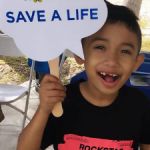 So his parents worked with us day and night to search for a matching donor. We held recruitment drives together at universities, churches, and street fairs. His parents spoke with newspapers and television stations. They met with anyone who would listen in order to spread the word.
So his parents worked with us day and night to search for a matching donor. We held recruitment drives together at universities, churches, and street fairs. His parents spoke with newspapers and television stations. They met with anyone who would listen in order to spread the word.
New Facebook and Instagram pages were started. YouTube channels were produced. All to increase awareness and add more potential donors to the registry. They had to tell his story…over and over again.
We were searching for his cure.
Challenge #2
The second challenge is not just finding a donor who matches but finding one who will say ‘yes’ when called to donate.
 In 4 years, the Icla da Silva Foundation worked with Julian’s parents to hold hundreds of recruitment drives. We added thousands of new donors to the registry on behalf of Julian.
In 4 years, the Icla da Silva Foundation worked with Julian’s parents to hold hundreds of recruitment drives. We added thousands of new donors to the registry on behalf of Julian.
In the 4th year, two matching donors were finally identified.
Unfortunately, they both said no when asked to transplant their cells. One after the other. They each said no.
Can you imagine the heartache? To work so hard, to come so close to saving the life of your little boy, only to be turned down?
So we continued the search, hoping to find that one match who would agree to a transplant.
Commitment
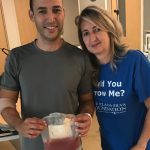 Becoming a stem cell donor does require a commitment, but it is not unsafe or painful. 79% of donations are done through a non-surgical process called PBSC. The process is similar to giving plasma. The donor receives a shot of a drug called filgrastim every day for 5 days. This increases marrow production in the body. On the day of your donation, you visit a hospital or clinic for the PBSC procedure. They take blood from your arm, separate the stem cells, and return the blood to your body through the other arm. It usually takes about 4 hours.
Becoming a stem cell donor does require a commitment, but it is not unsafe or painful. 79% of donations are done through a non-surgical process called PBSC. The process is similar to giving plasma. The donor receives a shot of a drug called filgrastim every day for 5 days. This increases marrow production in the body. On the day of your donation, you visit a hospital or clinic for the PBSC procedure. They take blood from your arm, separate the stem cells, and return the blood to your body through the other arm. It usually takes about 4 hours.
In the amount of time between breakfast and lunch, while sitting in a clinic and watching TV, or talking on the phone and having a snack, you may save the life of another person.
A Match Was Found
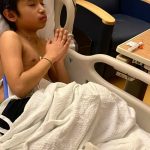 Finally, a matching donor was found, followed by much joy and relief. Julian and his family were grateful and happy to travel to Cincinnati Children’s Hospital to prepare for the transplant.
Finally, a matching donor was found, followed by much joy and relief. Julian and his family were grateful and happy to travel to Cincinnati Children’s Hospital to prepare for the transplant.
His little body had already been through so much, but it was only just the beginning.
So much testing, prepping, prodding, and chemo in the days leading up to his transplant. This was in July, so the testing included repeated COVID testing. Then finally infusion, and waiting for the cells to engraft…all during a global pandemic, while protests and social unrest happened throughout the country.
His parents published a video diary of those first few days which is highlighted here.
But the transplant wasn’t successful. Julian’s body fought the new cells.
2nd Transplant
 The doctors recommended a haploidentical (haplo) transplant. A haplo is a half-matched stem cell transplant from a family member. A biological parent or child is always a half match to the other, based on genetics.
The doctors recommended a haploidentical (haplo) transplant. A haplo is a half-matched stem cell transplant from a family member. A biological parent or child is always a half match to the other, based on genetics.
Since haplo matches aren’t 100% compatible, it comes with more risk.
They tested and chose Daddy as the best candidate.
Unfortunately, once again, Julian’s immune system fought off his daddy’s new cells.
3rd Transplant
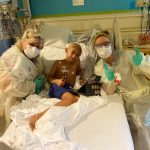 Refusing to give up, the small warrior and his parents agreed to try another transplant. More testing, more chemo, a third month in the hospital…and a third transplant, this time from Mommy.
Refusing to give up, the small warrior and his parents agreed to try another transplant. More testing, more chemo, a third month in the hospital…and a third transplant, this time from Mommy.
For the third time in a row, the transplant didn’t work. Julian’s body fought off the cells.
Now What?
We begin again. Three transplants in three months and we will start the process all over again. We will continue to fight to save Julian’s life! We will continue the search for a compatible life-saving donor.
Small Goals
The warrior is waiting. His warrior parents are waiting. Waiting and worried, but they carry on. They’ve been fighting this battle for more than 6 years. Until then, the family takes it one day at a time.
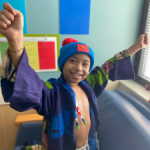 Julian’s most recent goal was to eliminate some of the many lines that attach his body to machines. Most recently, his TPN line (the feeding line that bypasses the gastrointestinal tract) and his PCA line (the line that helps him control his pain) were removed.
Julian’s most recent goal was to eliminate some of the many lines that attach his body to machines. Most recently, his TPN line (the feeding line that bypasses the gastrointestinal tract) and his PCA line (the line that helps him control his pain) were removed.
His goal is to prepare for Halloween. He wants to be able to wear a costume.
But he won’t tell anyone what he will be…it’s a surprise…and we can’t wait to see him smiling in it!
We wish you a happy Halloween Julian. We’re here for you. Keep smiling.
Become a potential blood stem cell donor. Include yourself on the national registry. Do it for Julian.
written by: Bret Itskowitch
A Little Girl From Miami is Saved by a Stranger from New YorkWatch an 8-Year-Old Girl with a Life-Threatening Disease Meet Her Life-Saving Bone Marrow Donor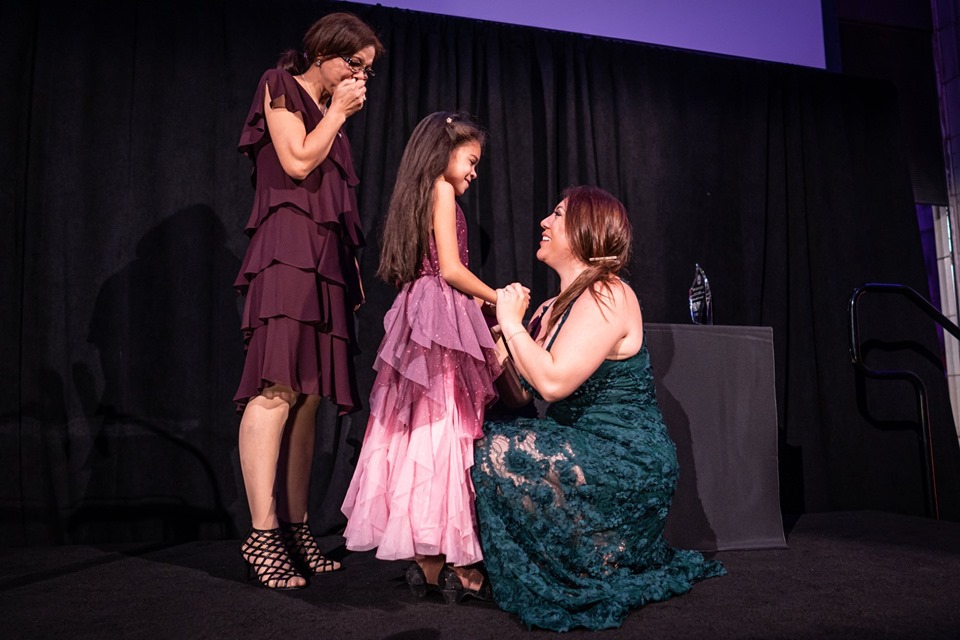
It was a once in a lifetime meeting…and it happened on stage, in front of a crowd of 300 tearful witnesses at the Icla da Silva Foundations annual Hope Gala.
The Gala is an end-of-year fundraiser, celebrating achievements and thanking supporters. You can read about it here.
The highlight of that evening was the face-to-face, first time meeting between a patient and their life-saving bone marrow donor.
The Patient – Giliani Lacayo
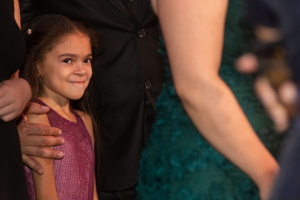 8-year-old Giliani Lacayo was the patient. She was brought to the stage by her mom Diomaris. Giliani was diagnosed with Kostman’s syndrome, a rare disorder of the bone marrow. Children born with this condition lack the white blood cells that are important in fighting infection.
8-year-old Giliani Lacayo was the patient. She was brought to the stage by her mom Diomaris. Giliani was diagnosed with Kostman’s syndrome, a rare disorder of the bone marrow. Children born with this condition lack the white blood cells that are important in fighting infection.
The doctors told Giliani’s mom that her only cure was a matching bone marrow transplant.
In February of 2015, at the age of 4, Giliani received a cord blood transplant. But unfortunately, one month later, the family was told that the transplant did not take.
As you might expect, Giliani’s mom was upset. She was fearful and very concerned. They had gone through this devastating process…months of hospitalization, four times with pneumonia, intense antibiotic treatments, daily injections of white blood cell boosters…and in the end, they had gotten nowhere.
Her 4-year-old little girl was not yet saved.
The doctors began the search for a matching bone marrow donor on the national registry. There are more than 20 million potential donors listed on the registry, but it’s all about the match. When a patient and donor share the same ethnicity, when they match, the chance for a successful transplant is much higher.
The search for a donor is more difficult for patients like Giliani, who are ethnically diverse. While White patients have a 77% chance of finding a matching donor, the chance of finding one for a Latino patient is only 46%; it’s even lower for African American patients.
Fortunately for Giliani, and despite her Hispanic origin, a match was found. Her name was Marta Sanchez, and she said yes when she received the call, asking her to donate her bone marrow.
The Donor – Marta Sanchez
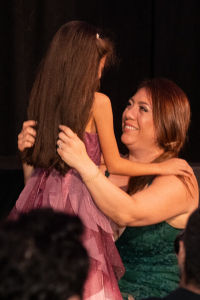 Marta remembers joining the registry at a drive run by the Icla da Silva Foundation. It was at the Dominican Embassy in NYC. She insists that joining the registry was no big deal. When she learned that she may be the cure for someone like her, she was happy to add her name and information.
Marta remembers joining the registry at a drive run by the Icla da Silva Foundation. It was at the Dominican Embassy in NYC. She insists that joining the registry was no big deal. When she learned that she may be the cure for someone like her, she was happy to add her name and information.
Seven years later, she received a call that she was a match for a patient.
Two days before Christmas, in 2015, Marta went to the hospital and donated her bone marrow.
At the time, she was going through some very difficult personal challenges. She had also received a lot of negative reactions from friends who declared it was dangerous and painful.
Marta insists that it was not dangerous or painful. She knew in her heart that it was something she had to do. Someone was counting on her.
Despite all that she was going through, even though she was concerned about not having enough to gift her beautiful daughters on Christmas, she knew that giving the gift of life to a complete stranger would be a blessing from God.
On Christmas Eve in 2015, little Giliani Lucayo received her life-saving bone marrow transplant from Marta Sanchez.
The Meeting
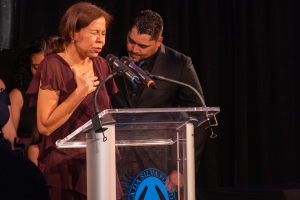 To watch Giliani’s mother express her gratitude for Marta’s selfless act was heart-wrenching. They embraced on stage for the longest time and it was a beautiful thing to witness.
To watch Giliani’s mother express her gratitude for Marta’s selfless act was heart-wrenching. They embraced on stage for the longest time and it was a beautiful thing to witness.
We were fortunate to watch the story unfold on stage.
A young girl suffering from a rare disease. A mother struggling to understand what will happen next. And a selfless woman, navigating her own challenges, who took the steps to unanimously give life to an unknown person.
There wasn’t a dry eye in the house. You can watch them meet in the short video below. At 2:55 little Giliani thanks Marta for saving her life.
You Can Play A Role
Giliani’s mom Diomaris, gave us her reaction to Marta’s life-saving bone marrow donation for her little girl, “There are no words for what she did. I’m thankful for her every day. I pray for her and her family every day. My whole life I will be thankful for her, she is part of our lives, she is part of our family. “
You could save another person’s life. You may be able to give joy to an entire family by donating your stem cells or bone marrow to a patient who doesn’t have a match in their family. Please add yourself to the Be The Match registry by clicking the link below. You will receive a swab kit in the mail. As soon as you return the kit, your name will be included in searches for matching donors.
Be like Marta. Do it for patients like Giliani.
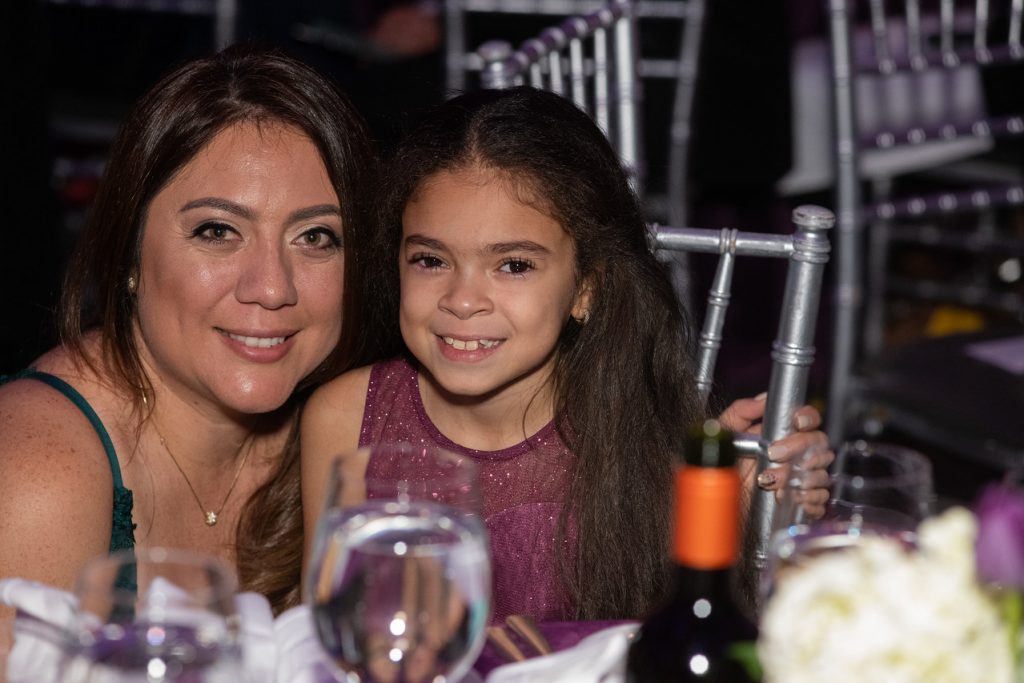
Thanks for reading.
Written by Bret Itskowitch
Icla da Silva MatchMaker 5K in NYC – Join Us on May 18thRegistration is open for the Icla da Silva MatchMaker 5K in NYC.
This is our 9th annual 5K Run/Walk in NYC. It will take place on Saturday, May 18, 2019.
All proceeds help us add more potential life-savers to the #BeTheMatch bone marrow registry. Donations also enable us to assist more patients in their battle against life-threatening diseases like leukemia, lymphoma and sickle cell.
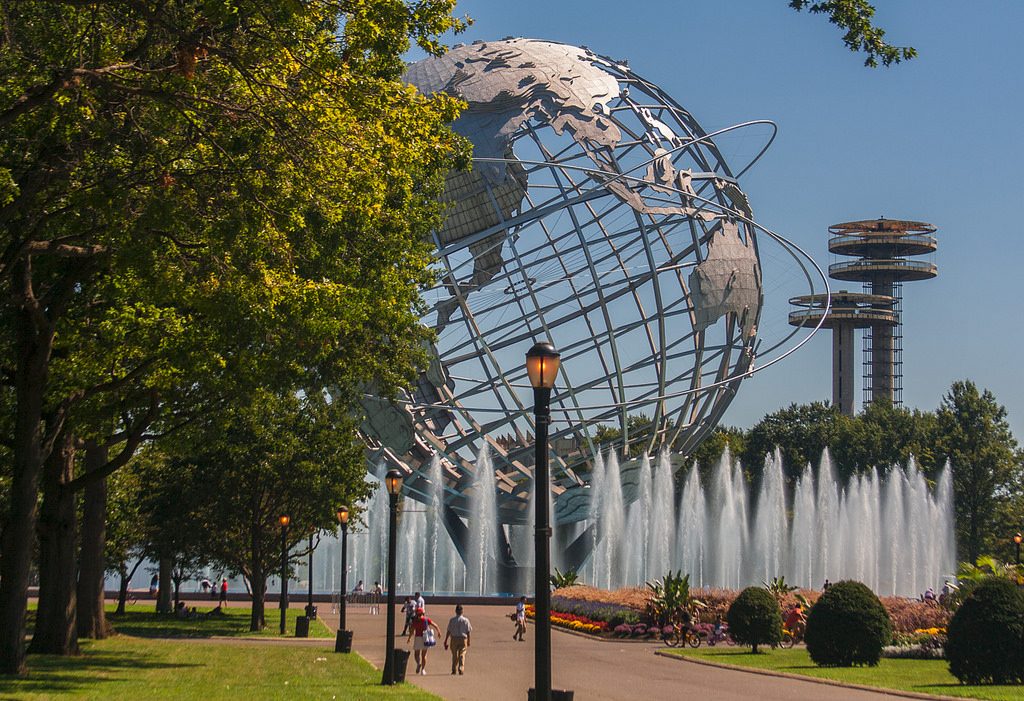
This year, the run will take place in the beautiful Flushing Meadows Corona Park in the Northern part of Queens. The park has been home to two World’s Fairs and now the Icla da Silva MatchMaker 5k.
In the spirit of helping diverse communities in their fight with various blood cancers, register today and run or walk “around the globe” with us.
You can run by yourself, but you will never be alone.
The Icla da Silva Foundation has been recruiting bone marrow donors and supporting patients in need for 27 years.
Join a team, or start your own. Help us raise funds and have fun doing it.
Early Bird registration is only $25, but it ends on March 18, so register today!
See you on May 18th.
Nada es ImposibleMiguel está celebrando el aniversario de su trasplante de médula ósea … Está celebrando la vida. Él insiste en que “nada es imposible”.
Miguel Oriol Torres López, es de Barranquitas, un pequeño municipio de montaña en el centro de Puerto Rico. Es un ávido ciclista de montaña y se acerca a los 10 años como sobreviviente de trasplante de médula ósea.
Insiste en que su experiencia y su trasplante lo hicieron más fuerte.
Su Médula ósea Dejó de Funcionar
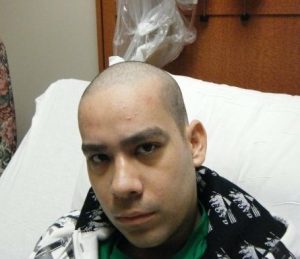 Era el 2007, mientras estudiaba en la Universidad Politécnica en San Juan, cuando Miguel fue diagnosticado y hospitalizado con anemia aplásica. La anemia aplásica es una condición rara y grave. La médula ósea deja de producir suficientes células sanguíneas, lo que deja al paciente cansado y en riesgo de infecciones potencialmente mortales. Afecta la producción de glóbulos rojos y glóbulos blancos, y a las plaquetas.
Era el 2007, mientras estudiaba en la Universidad Politécnica en San Juan, cuando Miguel fue diagnosticado y hospitalizado con anemia aplásica. La anemia aplásica es una condición rara y grave. La médula ósea deja de producir suficientes células sanguíneas, lo que deja al paciente cansado y en riesgo de infecciones potencialmente mortales. Afecta la producción de glóbulos rojos y glóbulos blancos, y a las plaquetas.
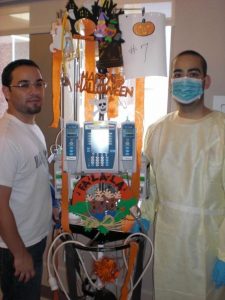 Durante el año siguiente, Miguel recibió tres tratamientos diferentes con la esperanza de estimular su médula ósea en el Hospital Auxilio Mutu en San Juan. También recibió transfusiones semanales de sangre y plaquetas. En septiembre del 2008, estaba combatiendo una infección severa cuando un doctor le dijo a su familia que era posible que no sobreviviría. Su hematólogo, Dr. José A. Lozada lo trasladado por aire a Houston, TX, al MD Anderson Cancer Center, donde estabilizaron su condición y comenzó el proceso para un trasplante de médula ósea.
Durante el año siguiente, Miguel recibió tres tratamientos diferentes con la esperanza de estimular su médula ósea en el Hospital Auxilio Mutu en San Juan. También recibió transfusiones semanales de sangre y plaquetas. En septiembre del 2008, estaba combatiendo una infección severa cuando un doctor le dijo a su familia que era posible que no sobreviviría. Su hematólogo, Dr. José A. Lozada lo trasladado por aire a Houston, TX, al MD Anderson Cancer Center, donde estabilizaron su condición y comenzó el proceso para un trasplante de médula ósea.
Un Trasplante Exitoso de Médula ósea
A pesar de la gravedad de su situación, resulta que Miguel fue muy afortunado. En unos pocos meses, su condición se estabilizó y sucedieron las siguientes cuatro “imposibilidades”:
- Se identificó un donante compatible. (Los pacientes hispanos y latinos solo tienen un 46% de probabilidades de encontrar un donante compatible en el Registro).
- El donante dijo que sí a una donación de médula ósea. (Solo el 37% de los donantes hispanos / latinos dicen sí cuando reciben la llamada).
- Miguel recibió un trasplante de médula ósea para salvarle la vida el 4 de noviembre de 2008.
- 100 días después, su nueva médula ósea comenzó a producir células sanguíneas.
Las probabilidades estaban en contra de Miguel, pero él las venció. Regreso a su ciudad natal en Puerto Rico. Continuó viajando al MD Anderson Cancer Center para chequeos. Después de 2 años en el hospital y con todos los medicamentos y tratamientos de quimioterapia, su cuerpo estaba débil. A través de un amigo, que era un entrenador de spinning, Miguel comenzó a tomar clases de spinning para recuperar las fuerzas. Su amigo también lo presentó a las carreras de bicicleta de montaña.
Después de su Trasplante
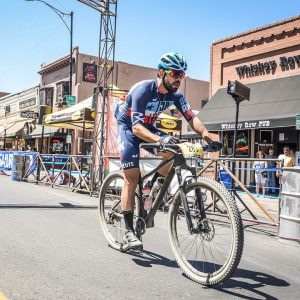 Las carreras de bicicletas eran nuevas para Miguel. Le dio algo que había estado perdiendo después de todo ese tiempo en el hospital: movimiento, libertad y entorno natural. En muy poco tiempo, comenzó a entrenar y conoció a muchos nuevos amigos. También empezó a participar en carreras de bicicleta de montaña de larga distancia. Sus finales de carrera fueron bastante impresionantes:
Las carreras de bicicletas eran nuevas para Miguel. Le dio algo que había estado perdiendo después de todo ese tiempo en el hospital: movimiento, libertad y entorno natural. En muy poco tiempo, comenzó a entrenar y conoció a muchos nuevos amigos. También empezó a participar en carreras de bicicleta de montaña de larga distancia. Sus finales de carrera fueron bastante impresionantes:
- Baja Epic – 2 ° lugar en su grupo de edad
- Prickly Pedal – 2 ° lugar en su grupo de edad
- Festival de bicicleta de montaña de Pisgah – 17 ° en la categoría de hombres abiertos
- Whisky Off Road: top 20 en general
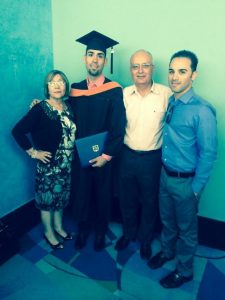 Regresó a la Universidad Politécnica y terminó su carrera de ingeniería eléctrica. Trabaja medio tiempo como ingeniero eléctrico y también trabaja tiempo completo en la farmacia de su padre.
Regresó a la Universidad Politécnica y terminó su carrera de ingeniería eléctrica. Trabaja medio tiempo como ingeniero eléctrico y también trabaja tiempo completo en la farmacia de su padre.
Miguel dice que su trasplante lo hizo más fuerte que antes, tanto mental como físicamente. Él está muy agradecido.
Ayudando a Otros
A medida que Miguel se aproxima al décimo aniversario de su trasplante de médula ósea, quiere involucrarse más en la creación de conocimiento sobre cómo unirte al registro Be The Match. Al contar su historia, quiere motivar a personas que se unan la registro y animar a los pacientes que necesitan un trasplante de médula ósea a que nunca pierdan la esperanza. Un trasplante de médula ósea le salvó la vida. Él insiste en que lo hizo más fuerte que antes, tanto física como mentalmente. “Podemos volver a la normalidad después de un trasplante … puede fortalecernos”.
“Nada es Imposible”
Puedes unirte al registro en apoyo de Miguel haciendo clic en este enlace:
También puedes ayudar a aumentar el conocimiento sobre la importancia sobre unión al registro. Miguel fue muy afortunado. No todos los pacientes logran encontrar un donante compatible. Simplemente no hay suficientes personas registradas para ser donantes potenciales. Puedes cambiar eso uniéndote al registro y difundiendo la palabra. Tú, tus amigos y tus familiares pueden convertirse en salvavidas … nada es imposible.
Para aquellos que no están listos o no pueden unirse al registro, Miguel te recuerda que una pequeña donación ayuda a nuestros esfuerzos para agregar donantes más étnicamente diversos al Registro Be the Match. La Fundación Icla da Silva se concentra especialmente en proporcionar resultados equitativos para los pacientes durante el trasplante, y eso no puede suceder hasta que exista más diversidad en el Registro. Dona en honor de Miguel a:
 Por favor ayúdanos a compartir la historia de Miguel. Nada es imposible; como Miguel, creemos que más personas se unirán al registro y pacientes que sufren ganarán más esperanza.
Por favor ayúdanos a compartir la historia de Miguel. Nada es imposible; como Miguel, creemos que más personas se unirán al registro y pacientes que sufren ganarán más esperanza.
Miguel is celebrating the anniversary of his bone marrow transplant…Miguel is celebrating life. He insists “nothing is impossible”.
Miguel Oriol Torres Lopez, is from Barranquitas, a small mountain municipality in the center of Puerto Rico. Miquel is currently an avid mountain bike racer, and approaching 10 years as bone marrow transplant survivor.
He insists that his experience, and his transplant, made him stronger than he was before.
His Bone Marrow Stopped Working
 It was 2007, while studying at Universidad Politécnica in San Juan, when Miguel was hospitalized and diagnosed with aplastic anemia. Aplastic anemia is a rare and serious condition. The bone marrow stops producing enough blood cells, leaving the patient feeling fatigued and at risk for life threatening infections. It affects the production of both red and white blood cells, as well as platelets.
It was 2007, while studying at Universidad Politécnica in San Juan, when Miguel was hospitalized and diagnosed with aplastic anemia. Aplastic anemia is a rare and serious condition. The bone marrow stops producing enough blood cells, leaving the patient feeling fatigued and at risk for life threatening infections. It affects the production of both red and white blood cells, as well as platelets.
 During the next year, Miguel received three different treatments in the hopes of stimulating his bone marrow at Hospital Auxilio Mutu in San Juan. He also received weekly blood and platelet transfusions. His body was suffering from infection when in September of 2008, a doctor told his family that he could die within the week. His hematologist, Dr. Jose A. Lozada had him air lifted to Houston, TX to the MD Anderson Cancer Center, where they stabilized his condition and began the process for a bone marrow transplant.
During the next year, Miguel received three different treatments in the hopes of stimulating his bone marrow at Hospital Auxilio Mutu in San Juan. He also received weekly blood and platelet transfusions. His body was suffering from infection when in September of 2008, a doctor told his family that he could die within the week. His hematologist, Dr. Jose A. Lozada had him air lifted to Houston, TX to the MD Anderson Cancer Center, where they stabilized his condition and began the process for a bone marrow transplant.
A Successful Bone Marrow Transplant
Despite the severity of his situation, it turns out Miguel was very fortunate. In a few months time, his condition stabilized, and the following four ‘impossibilities’ happened:
- A matching donor was identified. (Hispanic and Latino patients only have a 46% chance of finding a matching donor on the Registry.)
- The donor said yes to a bone marrow donation. (Only 37% of Hispanic/latino donors say yes when they get the call.)
- Miguel received a life-saving bone marrow transplant on November 4, 2008.
- 100 days later, his new bone marrow began producing blood cells.
The odds were stacked against Miguel, but he beat them. Miguel moved back to his hometown in Puerto Rico. He continued to travel back to the MD Anderson Cancer Center for check-ups. After 2 years in the hospital, and with all of the medications and chemo treatments, his body was weak. Through a friend, who was a spinning coach, Miguel started taking spinning classes to gain back body strength. His friend also introduced him to mountain bike racing.
After His Transplant
 Bike racing was new for Miguel. It gave him something he had been missing after all of that time in the hospital – movement, freedom and natural surroundings. In a very short time, he met many new friends and began training, entering and placing in long distance mountain bike races. His finishes were quite impressive:
Bike racing was new for Miguel. It gave him something he had been missing after all of that time in the hospital – movement, freedom and natural surroundings. In a very short time, he met many new friends and began training, entering and placing in long distance mountain bike races. His finishes were quite impressive:
- Baja Epic – 2nd place in his age group
- Prickly Pedal – 2nd place in his age group
- Pisgah Mountain Bike festival – 17th in open mens category
- Whiskey Off Road – top 20 overall
He went back to Universidad Politécnica and finished his electrical engineering degree. He works part time in electrical engineering and full time at his father’s pharmacy.
 Miguel says that his transplant made him stronger, both mentally and physically, than before. He is very grateful.
Miguel says that his transplant made him stronger, both mentally and physically, than before. He is very grateful.
Helping Others
As Miguel approaches the 10 year anniversary of his bone marrow transplant, he wants to become more involved in creating awareness about joining the Be The Match registry. By telling his story, he wants to motivate people to join, and encourage patients in need of a bone marrow transplant to never lose hope. A bone marrow transplant saved his life. He insists it made him stronger, both physically and mentally, than he was before. “We can be normal again after a transplant…it can make us stronger.”
“Nothing is Impossible”
You can join the registry in support of Miguel by clicking this link: join the registry
You can also help increase awareness about the importance of joining. Miguel was very fortunate. Not every patient is successful in finding a matching donor. There simply aren’t enough people who have registered to become a potential donor. You can change that by joining the registry and spreading the word. You, your friends and family may become life savers…nothing is impossible.
For those who are unwilling or not able to join the registry, Miguel is reminding them that a small donation helps our efforts to add more ethnically diverse donors to the Be the Match Registry. The Icla da Silva Foundation is especially focused on providing equitable outcomes for patients as they go through transplant, and that can’t happen until there is more diversity in the Registry. Donate in Miguel’s honor at:
 Please help us share Miguel’s story. Nothing is impossible; like Miguel, we believe that more people will join the registry and patients who are suffering will gain more hope.
Please help us share Miguel’s story. Nothing is impossible; like Miguel, we believe that more people will join the registry and patients who are suffering will gain more hope.
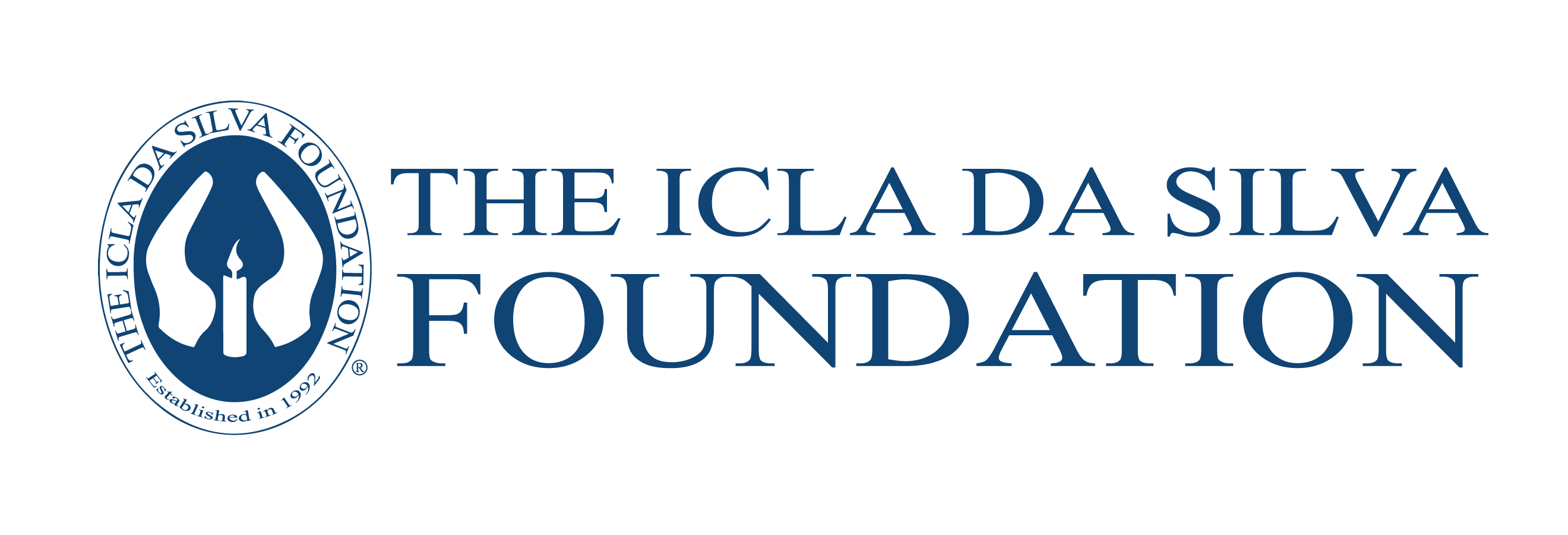
 Inglês
Inglês Espanhol
Espanhol Português
Português
